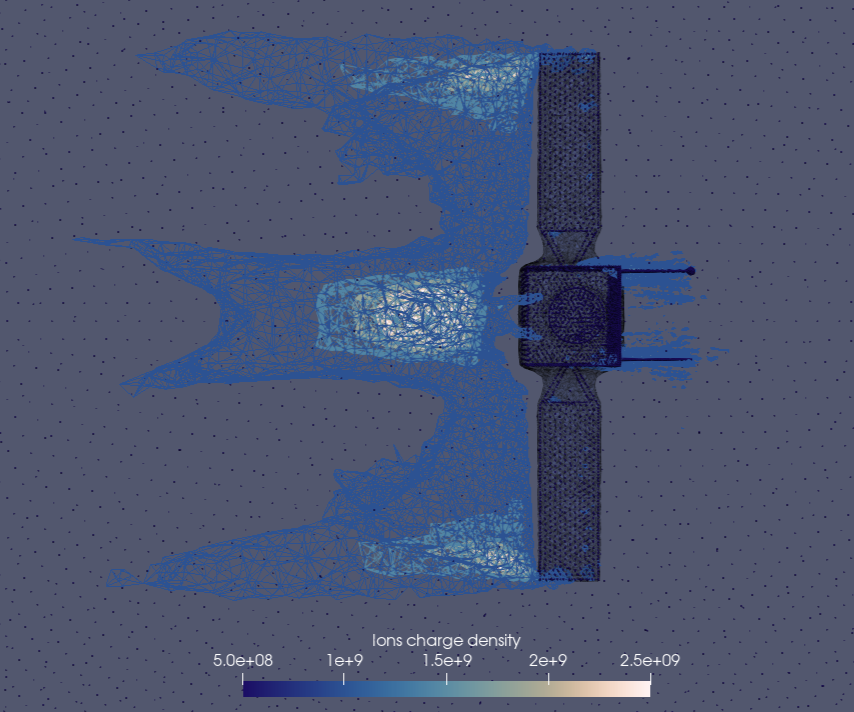Research
- Galaxy clusters
- Active Galactic Nuclei Feedback
- X-ray Astronomy
- Cosmological Simulations
- Gravitational Wave Astronomy
Feedback from Active Galactic Nuclei in Galaxy Clusters: a comparative analysis between Observations and Cosmological Simulations
University of Montreal (UdeM) / Max Planck Institute for Astronomy (MPIA) | Sept. 2023 - now |
With Prof. Julie Hlavacek-Larrondo (UdeM) and Dr. Annalisa Pillepich (MPIA).
My thesis project aims to explore in depth the effect of feedback from active galactic nuclei (AGN) on galaxy clusters. This research contributs to our understanding of the evolutionary mechanisms of galaxy clusters, a fundamental field of astrophysics and cosmology.
Located in the central galaxy of a cluster, an AGN is an active supermassive black hole that emits bright jets and winds, and influences the overall dynamics and structure of the surrounding galaxy cluster through AGN feedback. One of the most remarkable manifestations of which is the creation of gigantic X-ray emitting cavities in the intracluster medium. The study of active galactic nuclei is an active research topic, involving both observations and cosmological simulations, such as IllustrisTNG, for improving our understanding of these phenomena.
My thesis project aims to study the complex mechanisms governing the evolution of galaxy clusters and to determine whether the AGN feedback models implemented in the IllustrisTNG simulations are in agreement with actual observations of galaxy clusters.
| 2025 | X-ray shocks in the cool cores of galaxy clusters: insights from TNG-Cluster Marine Prunier, Francesco Ubertosi, Julie Hlavacek-Larrondo and Annalisa Pillepich |
Prunier+25c | 2025 | X-ray cavities in TNG-Cluster: a direct comparison to observations Marine Prunier, Annalisa Pillepich, Julie Hlavacek-Larrondo and Dylan Nelson |
Prunier+25b | 2025 | X-ray cavities in TNG-Cluster: AGN phenomena in the full cosmological context Marine Prunier, Julie Hlavacek-Larrondo, Annalisa Pillepich, Katrin Lehle and Dylan Nelson. |
Prunier+25a |
Subsolar Black Hole Hunt in the LIGO-Virgo 3rd Observation Run
Université Libre de Bruxelles (ULB) | March - June 2023 | Bruxelles, Belgium
With Prof. Sébastien Clesse (LIGO-Virgo collaboration), at the Theoretical Physics department of ULB.
Analysis and parameter estimation of a subsolar-mass black hole candidate in LIGO-Virgo 3rd observing run.
The search for subsolar mass black holes is an exciting topic for the LIGO-Virgo collaboration, as the detection of such objects would provide evidence for the existence of primordial black holes. In the following paper, we perform a complete study of a subsolar black hole candidate identified in the second part of the third observing run of the gravitational wave detector of the LIGO-Virgo-KAGRA collaboration.
| 2023 | Analysis of a subsolar-mass black hole candidate from the second part
of the third observing run of Advanced LIGO Marine Prunier, Gonzalo Morras, Jose Nuno, Sebastien Clesse, Juan Garcia-Bellido and Esther Ruiz-Morales. |
Physics of the Dark Universe |
High Energy and Extragalactic Astrophysics with Machine Learning
University of Montreal | March - Sept 2022 | Montreal, Canada
Internship supervised by Prof. Julie Hlavacek-Larrondo (Research Chair in Observational Astrophysics of Black Holes), at the X-TRA group for extragalactic and high-energy astrophysics.
Development of machine learning routines to analyse X-ray emissions from galaxy clusters. The spectrum of Abell 1795 cluster, used as a stable calibration source during the lifetime of CHANDRA, shows a decline in count rates over time as the instrument ages. This effect affects calibration, the aim is to use a machine learning method called Recurrent Inference Machine (RIM) to characterise and recalibrate the spectrometer properly.
| 2024 | Deconvolving X-ray Galaxy Cluster Spectra Using a Recurrent Inference Machine Rhea, Carter ; Hlavacek-Larrondo, Julie ; Adam, Alexandre ; Kraft, Ralph ; Bogdan, Akos; Perreault-Levasseur, Laurence ; Prunier, Marine |
The Astronomical Journal |
Spacecraft-plasma interactions study applied to Comet Interceptor mission (ESA)
ISAE-Supaero | 2021 - 2022 | Toulouse, France
Master thesis supervised by Dr. Pierre Henri, researcher in Space Plasma/Plasma Physics at the Laboratoire de Physique et de Chimie de l'Environnement et de l'Espace (LPC2E, CNRS), taking place in the scope of the Comet Interceptor spacecraft mission (European Space Agency).
We set up simulations of the spacecraft charging and plasma interaction during the comet's flyby. The goal was to quantify how it affects the performances of one of the instruments using the Spacecraft Plasma Interaction Software and publish a Technical Note on the results obtained for the ESA DFP-consortium in charge of Comet Interceptor scientific payload.
ASTRONOMER EXPERIENCE
Radioastronomy school at the Nançay Observatory
2023 | Nançay, France
Programming observations on the NenuFAR large low-frequency radio telescope. Post-processing -calibration, imaging- of NenuFAR and MeerKAT (South African Radio Astronomy Observatory) observations of radio galaxies and clusters.
Astronomer at the Observatoire du Mont-Mégantic (OMM)
2022 | Mont-Mégantic, Canada
Support astronomer at the observatory for eight nights, collection of observational data using the 1.6m telescope situated in the Canadian nature-preserved Mont Mégantic.
Familiarisation with astronomical methods and the use of PESTO (exoplanet search) and CPAPIR (infrared observations) under the supervision of the night technician and astronomer.
Astronomer for the 2022 Isae-Supaero Crew’s Martian Mission Simulation at the Mars Desert Research Station
2022 | Utah, United States
Organiser and participant of a 3-week Martian mission simulation at the Mars Desert Research Station. See MARS MISSION tab.


